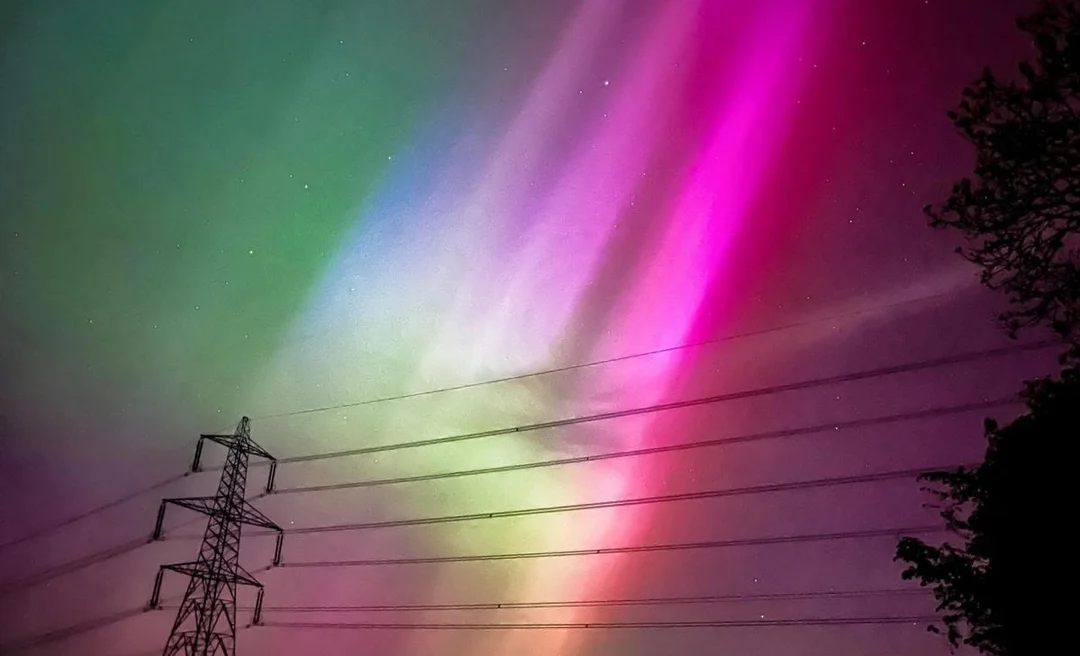
NASA Reveals Insights from the “Gannon Storm”: A Geomagnetic Wake-Up Call
A year after the most intense geomagnetic storm in over two decades, known as the "Gannon storm," struck Earth, NASA is sharing crucial lessons learned. What initially began as a simulated training exercise for space weather experts turned into a real-time observation of a powerful solar event, providing invaluable data and shaping our understanding of the Sun's impact on our planet and beyond.

On May 9, 2024, as NASA and other U.S. government agencies convened to simulate the effects of a major geomagnetic storm, the real thing was already underway. The Gannon storm, named in honor of space weather physicist Jennifer Gannon, unleashed a series of effects, from stunning auroras to disruptions in satellite orbits and even agricultural impacts.
Jamie Favors, director of NASA’s Space Weather Program, emphasized the unexpected nature of the event: "The plan was to run through a hypothetical scenario... But then our hypothetical scenario was interrupted by a very real one." This unexpected event allowed scientists to study a powerful geomagnetic storm and its consequences firsthand.
One of the significant discoveries stemming from the Gannon storm was the identification of two new, temporary radiation belts sandwiched between Earth's permanent Van Allen belts. According to Xinlin Li, lead author of a study on these belts, "When we compared the data from before and after the storm, I said, ‘Wow, this is something really new.’ This is really stunning." These belts persisted longer than previous temporary ones, offering new insights into radiation belt dynamics.
The storm also significantly impacted Earth’s magnetosphere. Data from NASA's MMS and THEMIS-ARTEMIS missions revealed “giant, curling waves of particles and rolled-up magnetic fields,” creating the largest electrical current seen in the magnetosphere in 20 years, according to Mara Johnson-Groh, Miles Hatfield, and Vanessa Thomas of NASA.
The auroras triggered by the Gannon storm were particularly noteworthy, displaying unusual magenta hues in regions like Japan. Research indicates that this magenta color resulted from a mixture of red (oxygen) and blue (nitrogen) emissions at extremely high altitudes, conditions influenced by high solar activity and atmospheric preheating.
However, the storm also had tangible negative consequences. NASA's GOLD mission observed atmospheric expansion due to increased heat, leading to the demise of some satellites. High-voltage power lines tripped, flights had to be rerouted, and GPS-guided tractors in the Midwestern U.S. experienced disruptions, leading to economic losses for farmers. Terry Griffin, a professor at Kansas State University, noted that affected farms lost an average of $17,000.

Even Mars felt the storm's effects. NASA's Curiosity rover recorded a surge in radiation equivalent to 30 chest X-rays, a factor that future manned missions to the Red Planet will need to consider.
This event reminded us that space weather is something to be taken seriously. According to Mike Cook, Space Weather Lead at MITRE Corporation, the Gannon storm “was a reminder that our sun is capable of producing these very disruptive events that can impact our critical infrastructure.”
As Shawn Dahl, NOAA's SWPC Service Coordinator put it “Press and media are becoming more knowledgeable, and emergency management authorities are increasingly planning for space weather storms. This is a very good thing and helps prepare our nation's resilience.'
The Gannon storm served as a wake-up call and a valuable learning opportunity. While scientists continue to analyze the vast amount of data collected, one thing is clear: understanding and preparing for geomagnetic storms is crucial for protecting our technology, infrastructure, and even future space exploration missions.
What other vulnerabilities might future space weather events expose? Share your thoughts and concerns in the comments below!